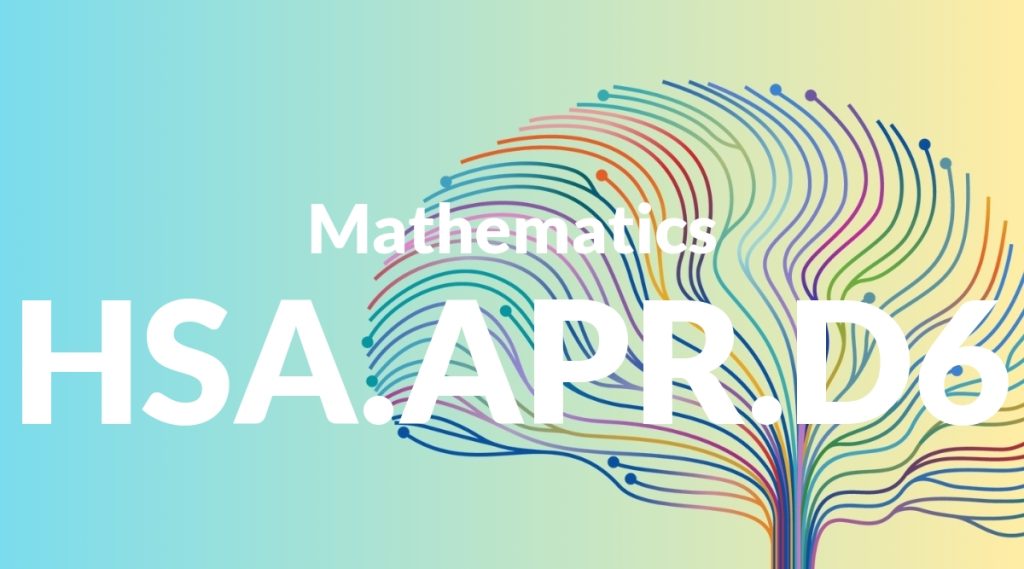Standard: HSA.APR.D6 – Rewrite simple rational expressions in different forms; write a(x)/b(x) in the form q(x) + r(x)/b(x), where a(x), b(x), q(x), and r(x) are polynomials with the degree of r(x) less than the degree of b(x), using inspection, long division, or, for the more complicated examples, a computer algebra system.
Grade level: High School: Algebra
Subject: Mathematics
Domain: Arithmetic with Polynomials & Rational Expressions
Teacher Overview
This standard focuses on rewriting simple rational expressions in different forms, which is a crucial skill in algebra. It enables students to simplify complex expressions, making it easier to solve and analyze mathematical problems. Mastery of this standard lays the groundwork for more advanced algebraic concepts and applications in various fields. Ensure students have a strong grasp of polynomial operations and basic algebraic manipulation. They should be comfortable with the concepts of rational expressions and the process of polynomial division.
Mastering this standard prepares students for more complex algebraic tasks, including solving rational equations and inequalities. It also lays the foundation for calculus topics such as limits and integration involving rational functions.
Common Misconception 1
Some students may mistakenly think that the remainder r(x) in the expression q(x) + r(x)/b(x) can have a degree equal to or greater than b(x). This is incorrect because the division process ensures that the degree of r(x) is always less than the degree of b(x).
Intervention 1
Provide targeted practice problems where students must identify and correct errors in the degree of the remainder. Use visual aids and step-by-step walkthroughs to reinforce the correct process.
Common Misconception 2
Another common misconception is that long division is the only method for rewriting rational expressions. This limits students’ flexibility in solving problems.
Intervention 2
Demonstrate alternative methods such as inspection and using computer algebra systems. Provide various examples and practice opportunities to help students become comfortable with different approaches.
Prerequisite Knowledge
Students should have a solid understanding of polynomial operations, including addition, subtraction, multiplication, and division. They should also be familiar with the concept of rational expressions and basic algebraic manipulation.
Subsequent Knowledge
After mastering this standard, students will be able to tackle more complex algebraic problems involving rational expressions, including solving rational equations and inequalities. They will also be prepared for calculus topics such as limits and integration involving rational functions.
Instructional Activities
- Practice problems involving polynomial long division
- Group activities using inspection to simplify rational expressions
- Computer lab sessions using algebra software to rewrite expressions
- Real-world application projects involving rational expressions




